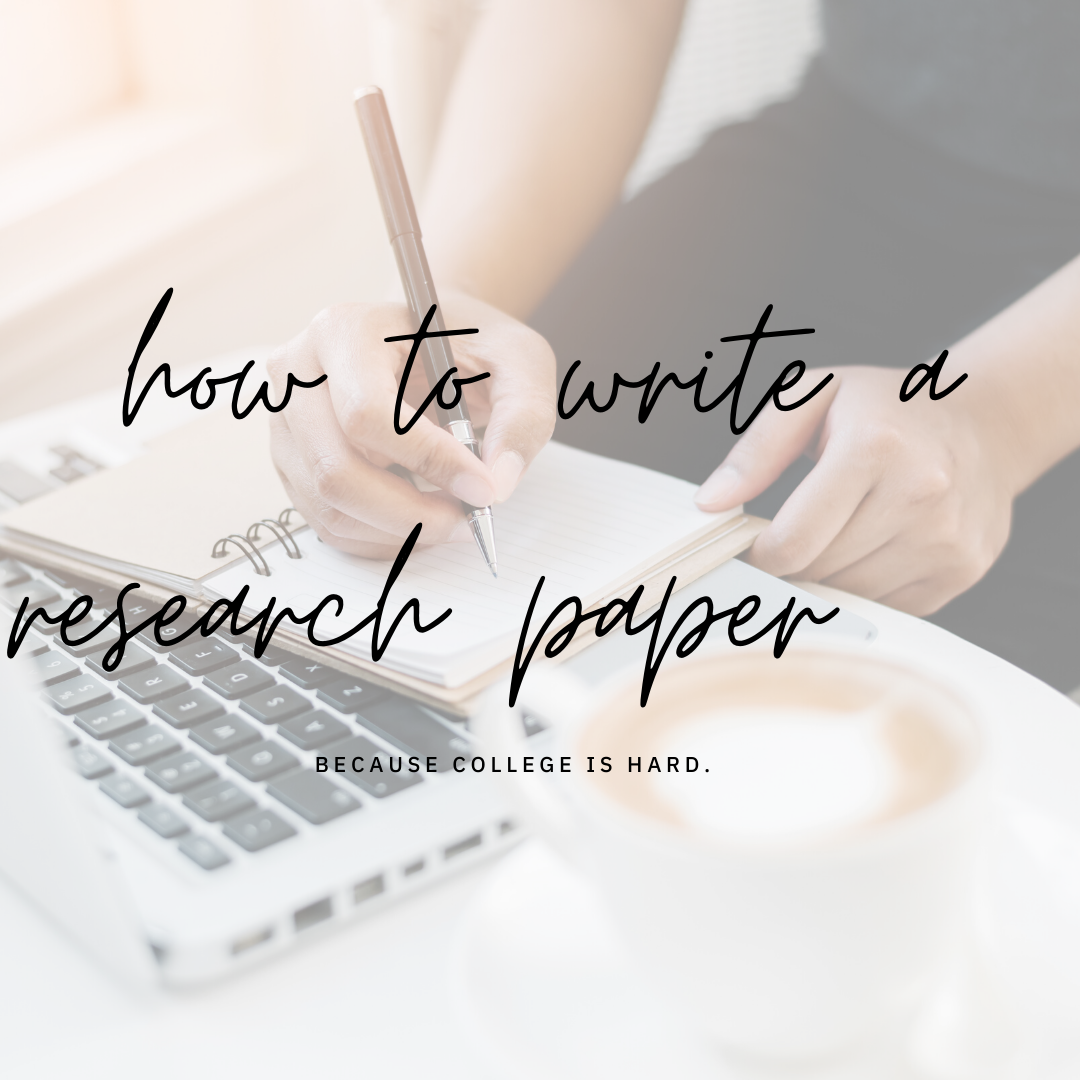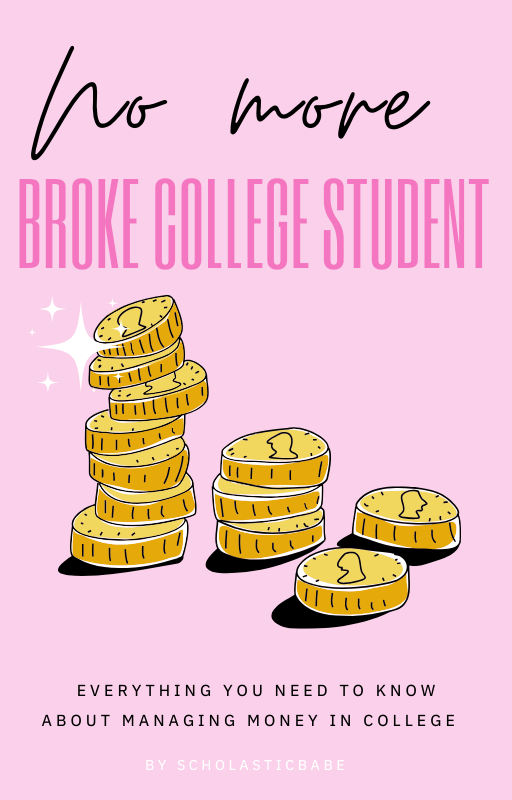How to write an Academic Research Paper
As a history major, I’ve had to write plenty of research papers over the years. In my very first class where I was expected to research, I was a freshman in a class with all seniors and I felt embarrassed to even ask how I should outline my research paper or what kind of citations to use.
It was a hot mess. But my pride wouldn’t let me admit that I was in over my head. I scoured the internet to find bits and pieces of information. I learned as much as I could from them but ultimately I had to learn a lot of it on my own.
You don’t have to go through what I did. I’m gonna share the exact steps I’ve taken to write all of my research papers and tips and tricks I’ve learned over the years to make the process a little more painless.
Settle on a topic
The first thing when you start to write a research paper that your professor will ask for is a research proposal. This is supposed to give them an idea of the area that you’re interested in. Usually, at first, the proposal isn’t set in stone but more so a jumping-off point.
If you’re in a class where the topics are broad it might be hard to pinpoint and area in particular that you’re interested in. It helps if you think about your research paper in a broader view first and then hone in on the details.
So the questions you’ll want to answer at first:
What types of topics are you fascinated by?
What materials do you have accessible to you? (at your library or online)
What types of questions do you want the answer to? (one with a definite answer or a more broad type of answer)
Answering those questions at first can give you an idea of where your interest is leading. If you have interest in multiple topics in the class you can start to dig in and see if there’s an intersection in the topics that you could put together.
Coming up with a good focus will make or break your paper because if you pick a topic with too little information then you can’t really do much research and if you pick a topic that you're not that interested in it will be hard to spend the time needed to write a good paper.
It’s okay to spend some time thinking about it, talk to the people in the class and see what their research topics are, ask the professor research topics that others have covered in the past, go the library and see what types of books are available in the subject and see if anything jump out at you.
Once you’ve spent the time to ensure that you have a topic that sounds interesting to you, you need to start thinking of the logistic so you can include it in your research proposal
The next questions you want to answer are:
What area is your research question looking at?
What methodologies are you using?
Where do you plan to get your sources?
Who are thought leaders in your research category? ( authors, scholars etc)
Why is your research topic relevant (What is the impact? )
Those are a few of the things you'll include in your proposal. Usually, as an undergraduate, your proposal is just a few paragraphs, usually 1-3 depending on your school and the discipline. It really should just be a short synopsis covering why your topic is relevant and how you plan to answer the question or topic that you've picked.
Get your copy
Learn How I got a 700 credit score in college
Pick good sources
Once you've written your proposal and your professor is in the know about where you plan to take your research, you need to start finding sources. This can be easy or difficult based on your topic. Some topics are more specialized and require you to borrow from foreign libraries or large research schools while others can be found in your local library.
When you start to look for sources I would recommend trying the library first and talking to a librarian to find where your topic is in the library and taking a look through to see what is out there in that genre.
Libraries also have databases that you can use to see what books are in your area.
If you can’t find books in your area then you can do what’s called an inter-library loan where you can go to your closest library and request a book from almost any library in the world.
I’ve used that resource a few times when I was doing research on french feminism and needed some books from all the way across the US and I got them in a few days.
Once you’ve gone to the library you can also go to your professor to see if they have any other resources at their disposal that others have used in that class. Professors sometimes have access to more specialized materials that you could borrow.
Once you’ve covered all your basis physically. Then you can start seeing what types of materials are online.
The places you find research materials online are:
WorldCat (online library software)
Your Local library website
With all those sites you can search their database for the topic you are interested in specifically and things like documentaries, recordings articles, and books.
Finding your resources takes a good chunk of your time but by knowing where to start looking you can focus more on finding the best materials that fit your research.
Create an outline or bibliography
In my experience, if you’re in a class that has a research paper, your professor might ask to see your sources before you ever write your paper. This is to make sure you have found credible sources and also to make sure that you’re finding enough information to write a good paper.
In this step, you might create an annotated bibliography where you briefly describe each of your sources and why you chose them or just a plain bibliography with some of an outline of how you plan to structure your paper.
If you get an annotated bibliography it is important to remember to use hanging indent for your sources and know what type of citation your professor is looking for (for history and social sciences it’s usually Chicago, while for social sciences like English are mostly APA), almost always list your sources in alphabetical order of authors last name.
If you’re asked to do just a bibliography then you can list all your sources (I use Scribbr to create my bibliographies ) and I always attach my proposal for reference.
If for some reason you’re not asked to show your sources before you submit your paper, it’s still a good idea to make one so that you can have it on hand when you start writing and you can avoid plagiarism by starting to write and not knowing who to cite certain ideas to.
I usually create an outline as well where I will organize my thoughts based on the information I’ve read from my sources, I’ll choose what are the broad categories I want to organize my paper in, whether this is by area, subtopics or type of sources.
Start to lump ideas together from your sources so you can know what major areas or ideas you’re focusing on.
This will help you to get over that feeling of where do you start.
Write a rough draft
When you start writing your paper and you have an outline you always want to start with the introduction of what you’re talking about and the direction your paper is going to go in. Remember that the reader doesn’t know as much about the topic as you and you shouldn’t assume that your professor is aware of all the areas you’re going to be covering in your paper.
Your introduction shouldn’t be like a very dry version of the topics you’re covering but instead, it should be a captivating opening to get the reader excited and intrigued about what you’re going to discussing.
After you’ve done your introduction, you don’t have to do the traditional chronological order you have the flexibility to write your research paper in a way that makes sense for the topic you are discussing, so while you do want an introduction and conclusion, the middle section is up to your discretion of how you want to organize it. Different people organize their papers differently even if they’re discussing similar topics.
The thing you want to keep in mind is how does your structure supports your argument, seeing as that’s the biggest goal of your paper is to make a sound argument. You can do that in a variety of ways but you don’t want to lose sight of its going to make the reader more or less invested in your topic.
Revise, Revise, Revise!
Your rough draft is going to look like the ugly stepsister of your final paper. It should really be about putting your thoughts on paper. It doesn’t have to look pretty yet. While writing your rough draft you need to see where your paper is taking you because oftentimes as we write we discover new ideas and new layers that need to be introduced in our paper.
The revision process starts with you assessing if you have enough sources to back up your claim and see if your thesis needs to be tweaked in any way. See how your research paper is shaping and if its effectively conveying the ideas that you want.
Once you’ve done your own review, you’ll want it to be peer-edited so either by a course tutor, your professor, or library staff. Have someone else look at it and see your paper from their eyes. This step will let you know what needs clarification and what isn’t working.
Once you’ve had it looked at by at least one other person, then you can use editing software like Grammarly to catch any minor grammatical or spelling errors.
Always remember to go over your paper even after you’ve used editing software though because it doesn’t catch every mistake.
My favorite tip is to listen to your paper. I use TTSREADER to listen to my research papers to catch any errors.
Double-check your sources and thesis
After you've written your paper and it’s been edited you really want to make sure your sources are supporting your paper and that if your thesis has changed even a little bit then you’ve adjusted your paper and sources accordingly.
Go through and make sure that your ideas are connecting and that you’ve chosen strong examples and used citations to make your paper more credible.
This final tweak should be the icing on the cake and its a way to check that you have enough sources and that your ideas flow in a way that supports what you are saying.
Don’t skip out on this step because even after you’ve edited your paper youd be surprised that you can find areas where examples no longer make sense or a claim needs another source for it to be stronger.
Take this moment to fill in and double-check any in-text citation or footmarks as well because tiny mistakes with these can mark down your paper.
If you’re not sure whether to use footmarks or in-text citations check with your professor because its specific to your class.
And lastly…
Look at the beautiful piece of work you just did!
Writing a research paper is no joke! and its usually a semester work of build-up so once you’ve completed your paper and its ready for submission don’t forget to take a moment to appreciate all the work you’ve put in and how much you’ve learned along the way.
Regardless of what grade you get, you should have learned at least one new thing while doing it and research is as much about satisfying your own curiosity than getting a good grade.
If you follow these steps you should get a good grade but please let know if you have any questions, I would be happy to answer them.






